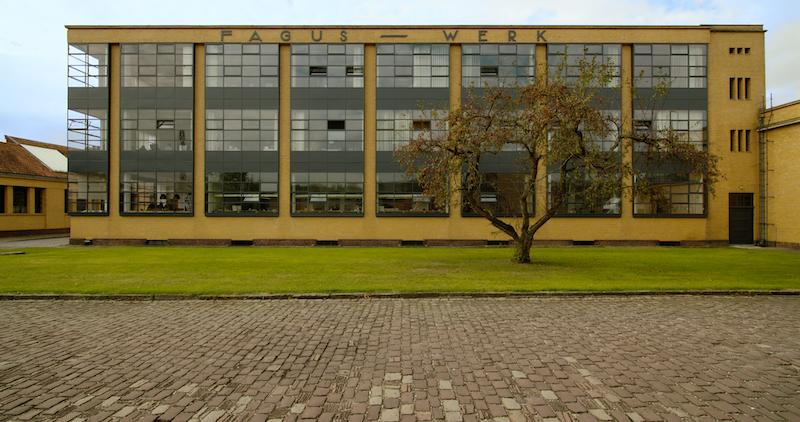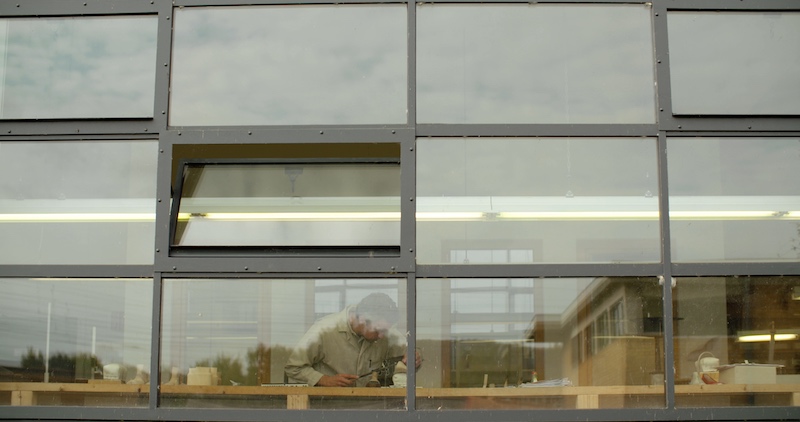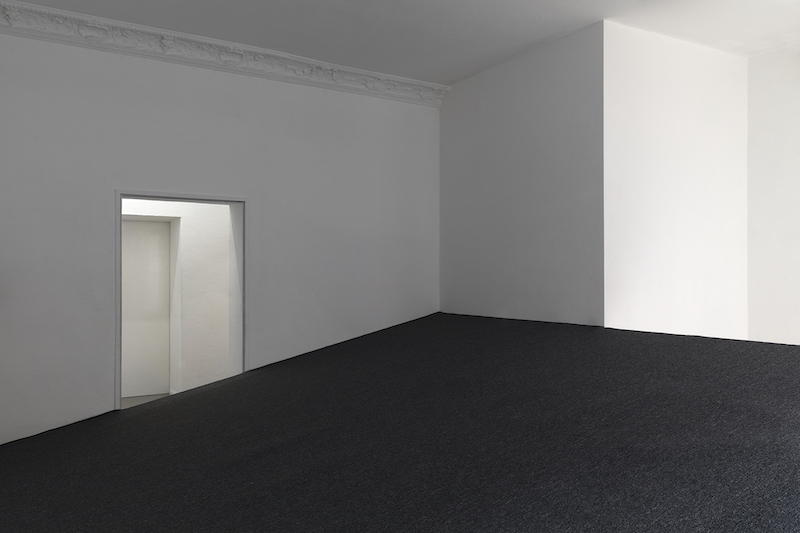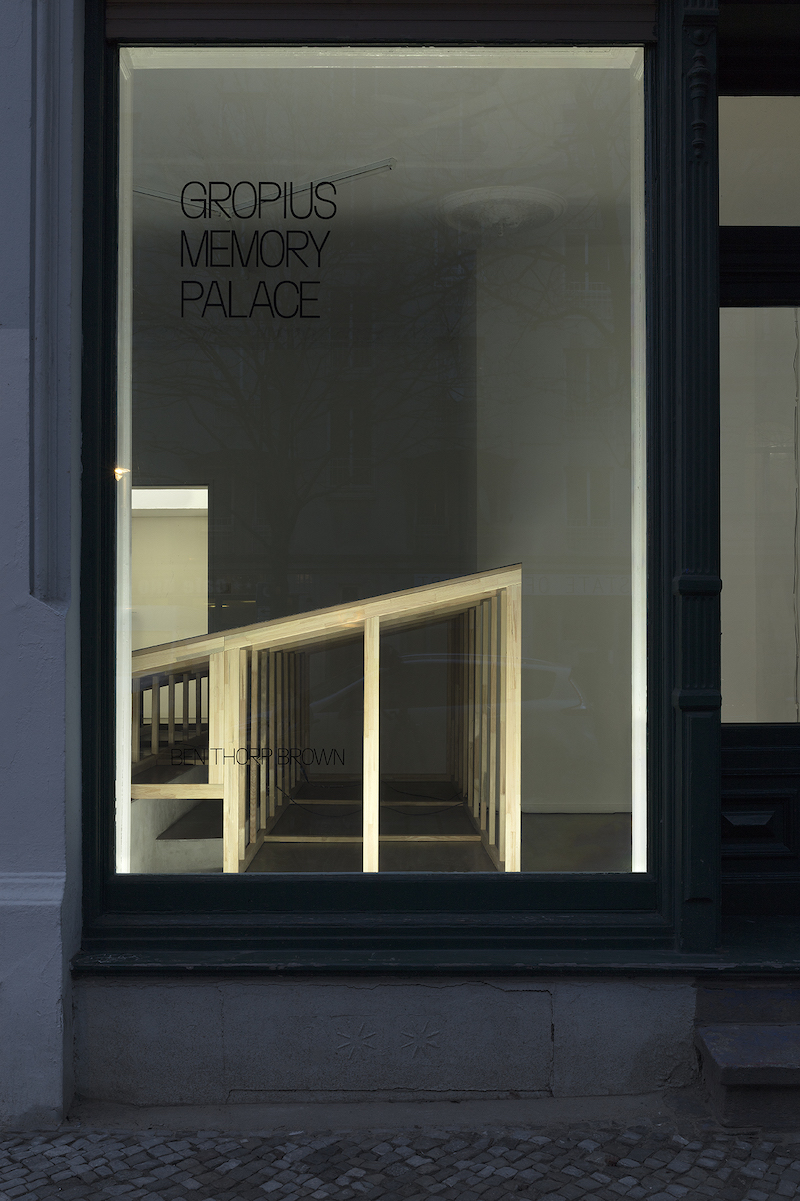
Ben Thorp Brown, Gropius Memory Palace, 2017 (film still). Courtesy the artist
Ben Thorp Brown's work addresses embodied experience, perception and memory. Working across video, sculpture, performance, his projects consider the effects of on-going economic, environmental, and technological change. He received a B.A. from Williams College, an M.F.A. from the School of the Art Institute of Chicago, and attended the Whitney Museum Independent Study Program. In this interview Ben Thorp Brown talks about his two most recent films, "Gropius Memory Palace", which was recently shown at Display in Berlin and "The Arcadia Center", which will be presented at the Jeu de Paume in Paris, CAPC Bordeaux, and Museo Amparo in Puebla, Mexico starting in June this year.
Lea Schleiffenbaum: Both "Gropius Memory Palace", a film from 2017, which is set in Walter Gropius’ Fagus Factory, as well as the current film you are working on deal with the physical and psychological implications of iconic buildings. What is it that interests you about architecture?
Ben Thorp Brown: I think I’ve been interested in architecture lately because of the way it works on the body. It can deepen and stretch time, similar to how filmmaking works with duration. Architecture structures experience, affects the way we pay attention, and affects how we feel. It’s akin to how music works. In one situation it might hardly be noticeable and sit in the background, and in another it might be the central focus of our attention, but either way it works on us, filtering the way we see the world. I wanted to explore how it works on us through the use of a film about a building, and also work with architecture itself in this installation, altering the architecture of the filmic experience for a viewer.




Ben Thorp Brown, Gropius Memory Palace, 2017 (film still). Courtesy the artist
LS: How do you choose the locations for your films? Do you start your research in archives or on site?
BTB: The process of choosing a site for a film is often a long, winding path. But, I keep my ears open, listening for things that inspire me and research further. In the case with "Gropius Memory Palace", I was fascinated by the fact that it was still a working factory for over 100 years, making the same exact object. It’s quite rare these days, and so I wanted to explore what were the forces there that might have slowed down the seemingly ever-increasing rate of production and the circulation of capital.
LS: For your exhibition "Gropius Memory Palace" at Display in Berlin, you built a large viewing ramp. Are you intending to construct a similar setting for your exhibition at Jeu de Paume?
BTB: Yes, the ramp was an architectural intervention for a film dealing with the effect of architecture on the body and memory. For "The Arcadia Center", there’s going to be an immersive experience and distinct furniture, but of a different sort.

 Ben Thorp Brown, Gropius Memory Palace, installation view Display, Berlin, 2019. Courtesy the artist and Display, photo by Chroma
Ben Thorp Brown, Gropius Memory Palace, installation view Display, Berlin, 2019. Courtesy the artist and Display, photo by Chroma

 Ben Thorp Brown, Gropius Memory Palace, installation view Display, Berlin, 2019. Courtesy the artist and Display, photo by Chroma
Ben Thorp Brown, Gropius Memory Palace, installation view Display, Berlin, 2019. Courtesy the artist and Display, photo by Chroma
LS: You described "The Arcadia Center" as a continuation of Gropius Memory Palace. Would it be correct to talk about a film cycle? And if so, will there be a third part?
BTB: It’s not explicitly a sequel or any sort of structure like this, but the Arcadia Center is going to have a film that is addressing the relationship between architecture and psychology, and so it’s definitely responding to related ideas. However, "The Arcadia Center" is more mythic, and otherworldly. I have an idea for a third work about architecture that I’d love to make.
LS: It’s interesting, by the way you talk about the films, it’s not clear what comes first - the overall atmosphere of the film or the architecture it depicts. The idea you mention - does it derive from a specific building or from a theoretical treatise? Or asked differently: are you searching for architecture to fit the idea for a film, or are you searching for a cinematography that would suit the architecture?
BTB: To make the films, I work on developing a larger conceptual, and sometimes even fictional framework that they operate within. So, with these recent architecture films, the architecture comes after the idea, and then a kind of cinematographic language follows.
 Ben Thorp Brown, Gropius Memory Palace, installation view Display, Berlin, 2019. Courtesy the artist and Display, photo by Chroma
Ben Thorp Brown, Gropius Memory Palace, installation view Display, Berlin, 2019. Courtesy the artist and Display, photo by Chroma
LS: You are mostly known for film and video installations. Only recently did I learn, that you also produce sculptures. Abstract and rather subtle, your glass sculptures allow for a much broader interpretation. In fact, seeing them opened a whole new perspective on your work to me. How would you describe the relationship between your sculptures and your films?
BTB: The films have circulated more widely, but I’ve always liked working with sculpture, experimenting with new materials, and investigating how to translate ideas into form. Objects invite different kinds of attention, and I like to create exhibitions that propose different kinds of experience operating alongside one another. It’s a kind of choreography, and a chance to speak in another way. I often see it as coextensive process with the filmmaking, sort of creating worlds where different objects and experiences can live together.
 Ben Thorp Brown, Modified Curtain Wall, 2019. Courtesy the artist
Ben Thorp Brown, Modified Curtain Wall, 2019. Courtesy the artist